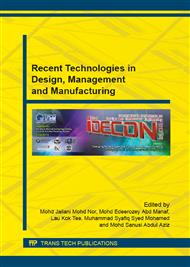p.196
p.202
p.211
p.216
p.221
p.227
p.233
p.238
p.245
Modelling and Analysis of All Terrain Vehicle (ATV) Using System Identification for Yaw Stability
Abstract:
This paper presents the modelling and analysis of path-following planning motion of an All-Terrain Vehicle (ATV) using system identification technique in term of yaw stability. The modelling is based on the single track and established by using Newtonian equation motion. Mathematical modelling is constructed in form of state space equation with the parameters used are measured through physical measurement of prototype ATV. Based on this model selection, the open loop system is simulated and the result will be validated by using system identification. Inertial Measurement Unit (IMU) sensor is used to collect and measure the data for the path-following planning. The analysis results for yaw stability of prototype ATV are validated by system identification method with step response approach. Both of the simulated and measured data is compared and the data is estimated to get the best fit for yaw estimation by using complimentary filter technique. From the result, the best fit for yaw estimation is 91.96% and considered as stabilized at steering angle of 45°.
Info:
Periodical:
Pages:
221-226
Citation:
Online since:
May 2015
Authors:
Price:
Сopyright:
© 2015 Trans Tech Publications Ltd. All Rights Reserved
Share:
Citation:


